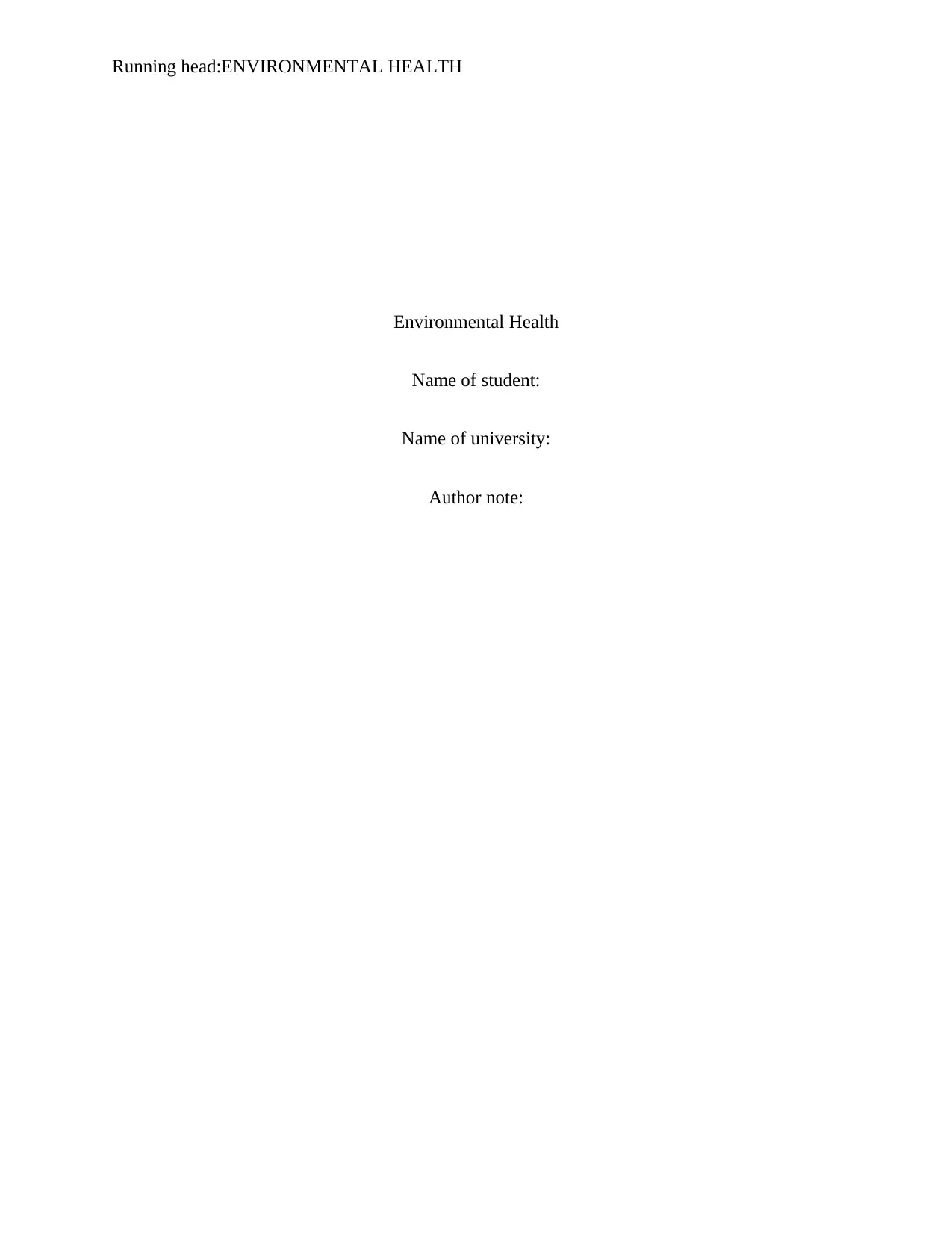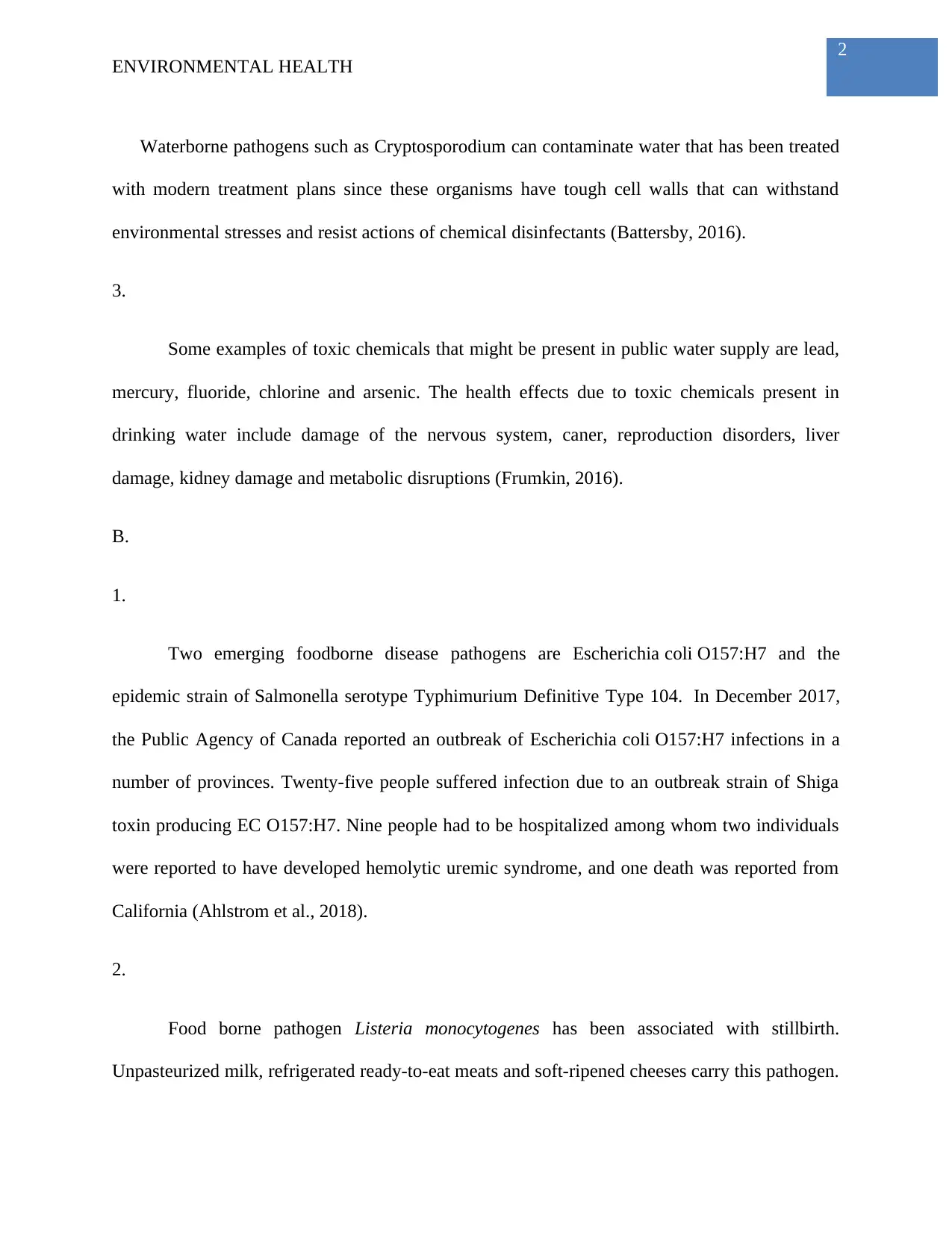Environmental Health Assignment: Water, Food, and Pathogens
VerifiedAdded on 2021/04/17
|5
|729
|115
Homework Assignment
AI Summary
This Environmental Health assignment solution addresses key concepts in water quality and food safety. It begins by describing the principal reserves for water, highlighting areas with adequate supplies and those facing shortages, followed by an explanation of the four stages of water treatment and the potential for waterborne pathogens like Cryptosporidium to contaminate treated water. The assignment then explores toxic chemicals in the public water supply and their health effects. The second part of the assignment focuses on foodborne diseases, identifying emerging pathogens like Escherichia coli O157:H7 and Listeria monocytogenes, and discussing outbreaks and preventive measures. The solution also covers microbial agents linked to illnesses on cruise ships and methods to prevent such outbreaks. References from academic journals are included to support the findings.
1 out of 5






![[object Object]](/_next/static/media/star-bottom.7253800d.svg)